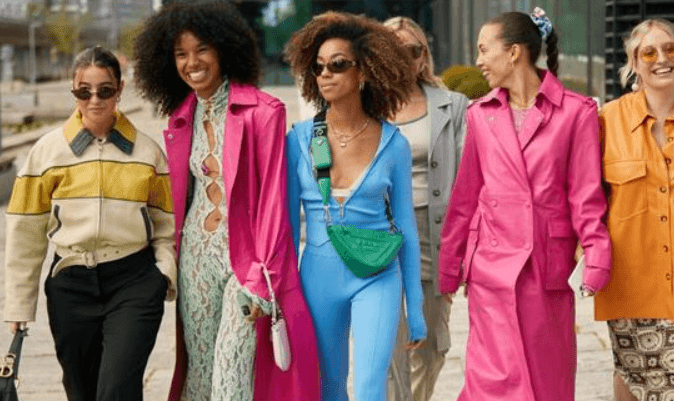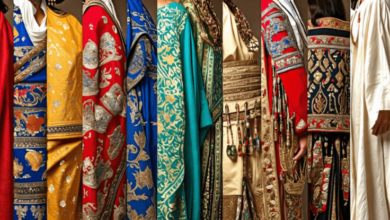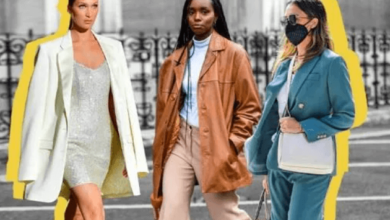
Street Style Evolution: From Runways to Everyday Wear
Introduction
Street style has grown from an organic form of self-expression to a powerful force in the fashion industry. Once a grassroots movement, it now bridges the gap between high-end fashion and everyday practicality. With its roots in urban culture and streetwear, street style reflects the spirit of individuality while being a mirror of societal trends. This article explores how street style has evolved, its journey from runways to everyday wear, and its influence on contemporary fashion.
The Origins of Street Style
Street style originated in the 20th century as a rebellion against the confines of traditional fashion. Subcultures like punk, hip-hop, and skateboarding played a pivotal role in shaping its early identity. These communities rejected mainstream norms, opting instead for styles that reflected their lifestyles and values. Denim, leather jackets, graphic tees, and sneakers became iconic staples of this movement, with functionality and comfort taking precedence over high fashion.
The Rise of Runway Influence on Street Style
The relationship between street style and high fashion took a dramatic turn in the 1990s when designers began drawing inspiration from urban culture. Brands like Tommy Hilfiger and Ralph Lauren incorporated streetwear elements into their collections, blending luxury with street-smart aesthetics. By the early 2000s, collaborations between high-end designers and streetwear labels, such as Louis Vuitton x Supreme, redefined the boundaries of fashion. The runway was no longer an exclusive realm for couture; it became a platform to celebrate the influence of the streets.
Social Media and the Democratization of Street Style
The digital age brought a wave of transformation to the world of street style. Platforms like Instagram, TikTok, and Pinterest enabled fashion enthusiasts to showcase their outfits to a global audience. Influencers and everyday individuals became trendsetters, breaking the monopoly of traditional fashion authorities. Hashtags and viral challenges further amplified the visibility of street-inspired looks, making it easier for people to draw inspiration and adopt trends into their daily wardrobes.
The Role of Street Style Icons
Street style icons have been instrumental in popularizing trends and making them accessible to the masses. Figures like Pharrell Williams, Kanye West, Rihanna, and the late Virgil Abloh have championed streetwear as a legitimate form of fashion. Through their innovative designs and fearless style, they have elevated casual wear into a symbol of cultural significance. Their impact on both street and runway fashion is undeniable, as their influence continues to shape what’s considered stylish and relevant.
Blurring the Line Between Runway and Everyday Wear
One of the most remarkable aspects of street style evolution is its ability to blur the lines between high fashion and everyday clothing. Luxury brands now frequently include hoodies, sneakers, and oversized silhouettes in their collections, previously considered staples of casual streetwear. Meanwhile, affordable fast-fashion retailers replicate high-end streetwear trends, making them accessible to a wider audience. This fusion has led to the emergence of “athleisure” and “normcore,” trends that prioritize comfort and minimalism while maintaining a polished appearance.
Sustainability in Street Style
The rise of sustainable fashion has also influenced the evolution of street style. Consumers are now more conscious of their environmental footprint, leading to increased demand for ethical and eco-friendly alternatives. Brands like Patagonia, Everlane, and Veja have embraced this shift by producing sustainable streetwear. Thrifting and upcycling have also become integral to street style culture, allowing individuals to express themselves creatively while reducing waste.
Street Style Around the World
Street style is a global phenomenon with diverse regional interpretations. In Tokyo, Harajuku culture blends quirky and colorful elements, while New York emphasizes sleek and edgy looks. London’s street style often incorporates vintage and avant-garde influences, while Paris combines effortless chic with modern streetwear. These regional variations showcase the universality of street style while celebrating cultural uniqueness.
Gender Neutrality in Street Style
Street style has been at the forefront of challenging gender norms in fashion. Oversized shirts, unisex sneakers, and gender-neutral accessories are now mainstream, reflecting a broader cultural shift toward inclusivity. This approach to fashion has allowed individuals to express their identities freely, breaking away from traditional gendered clothing categories.
The Future of Street Style
As technology and fashion continue to evolve, street style is expected to become even more intertwined with innovation. Smart clothing, augmented reality fashion shows, and virtual influencers are already making waves in the industry. Moreover, the growing emphasis on personalization and self-expression will likely lead to more diverse interpretations of street style. The future of streetwear is a blend of technology, sustainability, and creativity.
How to Incorporate Street Style into Everyday Wear
Incorporating street style into your wardrobe is all about confidence and individuality. Start by experimenting with classic staples like a pair of white sneakers or an oversized hoodie. Add bold accessories, such as a bucket hat or statement sunglasses, to elevate your look. Layering is another key element of streetwear—mix textures and patterns to create a visually dynamic outfit. Remember, street style is about breaking the rules and owning your unique aesthetic.
Conclusion
Street style has come a long way from its humble beginnings in subcultures to becoming a dominant force in the fashion world. Its evolution showcases the power of self-expression, inclusivity, and creativity. By bridging the gap between runways and everyday wear, street style has democratized fashion, making it accessible to all. As it continues to evolve, street style remains a testament to the ever-changing nature of fashion and its ability to reflect and shape cultural narratives.




